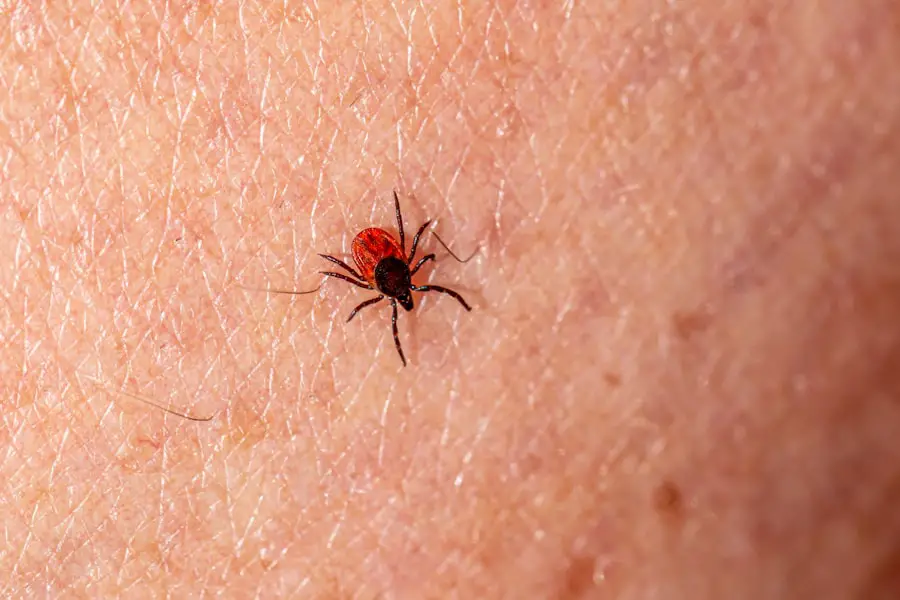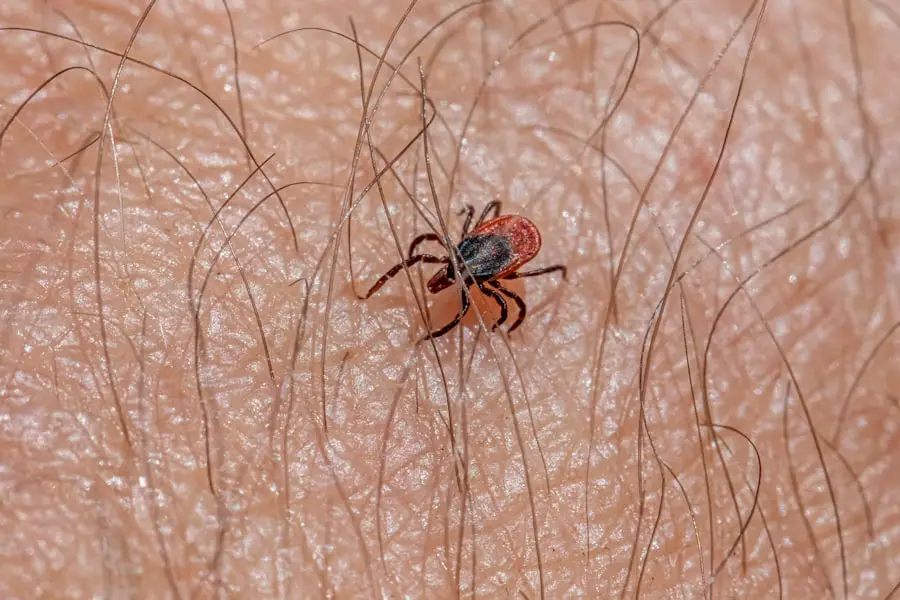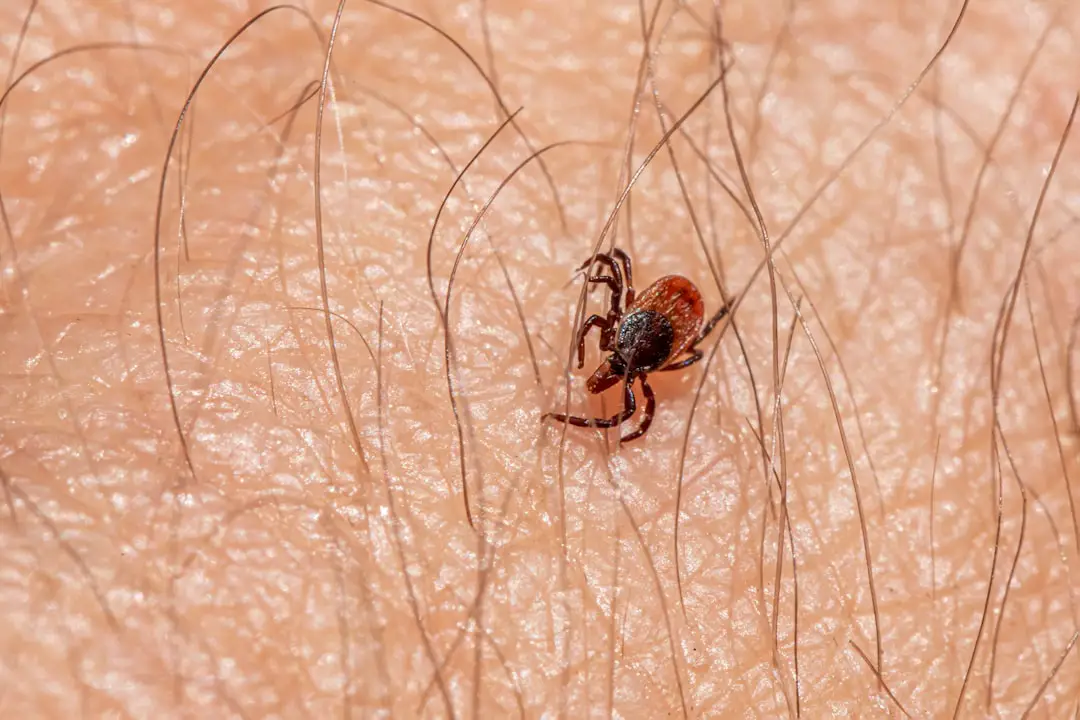Tick prevention is an essential aspect of outdoor safety, particularly for those who enjoy hiking, camping, or spending time in wooded areas. Ticks are small arachnids that can transmit various diseases, including Lyme disease, Rocky Mountain spotted fever, and anaplasmosis. As outdoor enthusiasts venture into tick-prone environments, understanding how to prevent tick bites becomes crucial.
This article delves into various strategies for tick prevention, from choosing the right clothing to employing effective insect repellents and creating safe zones in outdoor settings. The increasing prevalence of ticks in many regions has heightened awareness about the importance of prevention. With climate change contributing to the expansion of tick habitats, individuals must be proactive in safeguarding themselves and their pets.
By implementing a comprehensive tick prevention strategy, outdoor lovers can significantly reduce their risk of tick bites and the associated health complications. This article will explore various methods to protect against ticks, ensuring that outdoor activities remain enjoyable and safe.
Key Takeaways
- Tick prevention is important to avoid the risks of tick-borne diseases.
- Understanding the risks of tick bites helps in taking necessary precautions.
- Choosing the right clothing can help in preventing tick bites during outdoor activities.
- Using insect repellent is an effective way to prevent tick bites.
- Checking for ticks during and after hiking is crucial for early detection and removal.
Understanding the Risks of Tick Bites
Ticks are not just a nuisance; they pose serious health risks due to their ability to transmit pathogens. The most well-known disease associated with ticks is Lyme disease, which is caused by the bacterium Borrelia burgdorferi. Symptoms can range from mild flu-like signs to severe neurological issues if left untreated.
In addition to Lyme disease, ticks can carry other pathogens that lead to diseases such as babesiosis and ehrlichiosis, which can also have debilitating effects on health. The risk of contracting a tick-borne illness is particularly high in certain geographic areas, especially those with dense vegetation and high deer populations. For instance, the northeastern United States has seen a significant rise in Lyme disease cases over the past few decades.
Understanding the specific risks associated with tick bites in your region is vital for effective prevention. Awareness of peak tick activity seasons—typically spring through fall—can also help individuals take necessary precautions during their outdoor activities.
Choosing the Right Clothing for Tick Prevention

Selecting appropriate clothing is one of the first lines of defense against ticks. Wearing long sleeves and long pants can significantly reduce skin exposure, making it harder for ticks to latch onto the body. Light-colored clothing is particularly advantageous as it allows for easier detection of ticks before they attach.
Fabrics that are tightly woven can also provide an additional barrier against these tiny pests. In addition to basic clothing choices, specialized tick-repellent clothing is available on the market. These garments are treated with permethrin, an insect repellent that remains effective even after multiple washes.
Wearing such treated clothing can provide an extra layer of protection, especially during extended outdoor activities. It is also advisable to tuck pants into socks or boots to create a physical barrier that prevents ticks from crawling up the legs.
Using Insect Repellent for Tick Prevention
| Product | Active Ingredient | Protection Time | Application |
|---|---|---|---|
| Spray | DEET | Up to 8 hours | Apply to skin and clothing |
| Lotion | Picaridin | Up to 12 hours | Apply to skin |
| Wipes | Oil of Lemon Eucalyptus | Up to 6 hours | Apply to skin |
Insect repellents play a crucial role in tick prevention strategies. The Centers for Disease Control and Prevention (CDC) recommends using repellents that contain at least 20% DEET, picaridin, or oil of lemon eucalyptus. These ingredients have been shown to be effective in repelling ticks and reducing the likelihood of bites.
When applying repellent, it is essential to follow the manufacturer’s instructions carefully to ensure maximum effectiveness. For those who prefer natural alternatives, products containing oil of lemon eucalyptus or IR3535 can also provide some level of protection against ticks. However, it is important to note that natural repellents may not offer the same duration of protection as synthetic options.
Regardless of the type of repellent chosen, reapplication may be necessary after sweating or swimming, as these activities can diminish the effectiveness of the product.
Checking for Ticks During and After Hiking
Regularly checking for ticks during outdoor activities is a proactive measure that can help catch any potential infestations early. It is advisable to conduct tick checks every couple of hours while hiking, especially in areas known for high tick populations. Focus on areas where ticks are likely to attach, such as behind the ears, underarms, and along the waistband.
Using a mirror can assist in inspecting hard-to-see areas. After returning from a hike or outdoor activity, a thorough tick check is essential. This should include examining clothing and gear as well as performing a full-body inspection.
Ticks often attach themselves in hidden areas such as the scalp or behind the knees, so it is crucial to be diligent during this process. If a tick is found during these checks, it should be removed promptly and safely to minimize any potential health risks.
Showering and Washing Clothes After Hiking

Showering soon after returning from outdoor activities can significantly reduce the risk of tick bites leading to illness. A shower helps wash away any unattached ticks that may be on the skin or hair before they have a chance to attach. It is recommended to shower within two hours of being outdoors for maximum effectiveness in tick removal.
In addition to personal hygiene, washing clothes worn during outdoor activities is equally important. Ticks can cling to clothing fibers and may remain alive even after being removed from the body. Washing clothes in hot water and drying them on high heat can effectively kill any remaining ticks.
For added precaution, storing outdoor gear in sealed bags can help prevent ticks from spreading into living spaces.
Creating Tick-safe Zones at Campsites
When camping in areas known for ticks, creating tick-safe zones can enhance protection against these pests. Selecting a campsite that is away from dense vegetation and tall grasses reduces exposure to ticks significantly. Setting up tents in open areas with minimal leaf litter and brush can further decrease the likelihood of encountering ticks.
Additionally, maintaining a clean campsite by regularly clearing away debris and keeping food stored properly can deter wildlife that may carry ticks. Establishing boundaries around sleeping areas with wood chips or gravel can create a physical barrier that makes it more difficult for ticks to enter sleeping quarters. These proactive measures contribute to a safer camping experience by minimizing potential tick encounters.
Treating Gear and Equipment for Tick Prevention
In addition to personal protective measures, treating gear and equipment with insect repellents can provide an extra layer of defense against ticks. Items such as backpacks, tents, and sleeping bags can harbor ticks if not properly treated. Applying permethrin spray to these items creates a protective barrier that repels ticks effectively.
It is essential to follow product instructions carefully when treating gear to ensure safety and effectiveness. Some products may require drying time before use, while others may need reapplication after exposure to moisture or wear. Regularly inspecting gear for signs of ticks before packing up after an outing is also advisable to prevent bringing any unwanted pests home.
Using Tick Control Products for Pets
Pets are often at risk for tick bites when accompanying their owners on outdoor adventures. Utilizing tick control products specifically designed for pets is crucial in preventing infestations both on animals and within households. Options include topical treatments, collars, and oral medications that provide varying degrees of protection against ticks.
Consulting with a veterinarian can help pet owners choose the most appropriate tick control method based on their pet’s lifestyle and health needs. Regularly checking pets for ticks after outdoor activities is also essential; areas such as between toes, around ears, and under collars are common hiding spots for these pests. By taking proactive measures with pets, owners can help reduce the overall risk of tick-borne diseases within their families.
Knowing How to Remove Ticks Safely
If a tick does attach itself, knowing how to remove it safely is critical in minimizing health risks associated with bites. The CDC recommends using fine-tipped tweezers to grasp the tick as close to the skin’s surface as possible without squeezing its body. Pulling upward with steady pressure without twisting or jerking helps ensure that the entire tick is removed.
After removal, it is important to clean the bite area thoroughly with soap and water or rubbing alcohol. Monitoring the bite site for any signs of infection or unusual symptoms over the following weeks is also advisable. If symptoms such as rash or fever develop, seeking medical attention promptly can lead to early diagnosis and treatment of potential tick-borne illnesses.
Seeking Medical Attention for Tick Bites
Understanding when to seek medical attention after a tick bite is vital for ensuring health safety. If a tick has been attached for more than 24 hours or if it was removed improperly, consulting a healthcare professional is recommended. Additionally, if any symptoms such as fever, rash, or joint pain develop within weeks following a tick bite, immediate medical evaluation should be sought.
Healthcare providers may recommend testing for specific tick-borne diseases based on symptoms and exposure history. Early intervention can significantly improve outcomes for conditions like Lyme disease, where timely antibiotic treatment can prevent more severe complications from developing. Being informed about potential risks associated with tick bites empowers individuals to take appropriate action when necessary.
By understanding the various aspects of tick prevention—from clothing choices and insect repellents to safe removal techniques—individuals can enjoy their outdoor experiences while minimizing health risks associated with ticks. Implementing these strategies not only protects personal health but also contributes to overall public awareness about the importance of tick prevention in outdoor settings.
When hiking, it’s important to be aware of the potential dangers of ticks and how to avoid them. One helpful article on this topic can be found at taketravelinfo.com. This article provides valuable tips on how to protect yourself from ticks while enjoying the great outdoors. Remember to wear long sleeves and pants, use insect repellent, and check yourself thoroughly after your hike to prevent tick bites.
FAQs
What are ticks?
Ticks are small, blood-sucking parasites that can transmit diseases such as Lyme disease and Rocky Mountain spotted fever to humans and animals.
Where are ticks commonly found?
Ticks are commonly found in wooded and grassy areas, as well as in areas with dense vegetation. They can also be found in urban parks and gardens.
How can I avoid ticks when hiking?
To avoid ticks when hiking, you can wear long-sleeved shirts, long pants, and closed-toe shoes. You can also use insect repellent that contains DEET, picaridin, or oil of lemon eucalyptus. It’s also important to stay on the center of trails and avoid brushing up against vegetation.
What should I do after hiking to check for ticks?
After hiking, it’s important to check yourself, your children, and your pets for ticks. Pay close attention to areas such as the scalp, behind the ears, and around the waistband. If you find a tick, remove it carefully with tweezers and clean the area with rubbing alcohol.
What are the symptoms of tick-borne diseases?
Symptoms of tick-borne diseases can include fever, headache, fatigue, and muscle aches. In the case of Lyme disease, a characteristic bullseye rash may also appear. If you experience any of these symptoms after being bitten by a tick, it’s important to seek medical attention.
